 |
 |
 |
| |
Decline in the Need for Liver Transplantation for Endstage Liver Disease
Secondary to Hepatitis B in the US
|
| |
| |
Reported by Jules Levin
AASLD, Nov 2007, Boston, MA
W.R. Kim, J.T. Benson
Mayo Clinic, Rochester, MN
A.A. Hindman, C.L. Brosgart
Gilead Sciences, Foster City, CA
C. Fortner-Burton
Transplant Informatics Institute, Richmond, VA
AUTHOR SUMMARY
Total number of waitlist registrants in the US:
--Substantial decrease in 2002 (MELD system)
--Subsequent resumption of increase (_ listing MELD)
Divergent pattern in waitlist registration since 2000:
HBV: decrease
HCV: plateau
Other: increase
Decrease in HBV: Most pronounced in ESLD
Increase of HCC (all diagnosis):
--Epidemiology (_ incidence)
--Preferential assignment in organ allocation priority
AUTHOR CONCLUSION
The incidence of ESLD secondary to HBV has decreased, pointing to the impact of widespread use of effective antiviral agents and highlighting the importance of early diagnosis and intervention in appropriate candidates.
Given the smaller impact of anti-HBV therapy on HCC, waitlist registration for HCC may continue to increase.
The decrease in ESLD with HCV was unexpected. Although antiviral therapy may have reduced the incidence of hepatic decompensation, disease burden in non-transplant candidates could not be addressed in this study.
Note from Jules: in graph below waitlist registrants decreased by 37% for HBV and 13% for HCV ESLD. Waitlist registrants for HBV HCC increased 146% and for HCV HCC 221%.
BACKGROUND
Viral hepatitis B and C:
Major cause of chronic liver disease
--End-stage liver disease (ESLD)
--Hepatocellular carcinoma (HCC)
Liver transplantation (LTx) in US:
--Hepatitis C (HCV): 40%
--Hepatitis B (HBV): 5%
ANTIVIRAL THERAPY
Hepatitis C
--Sustained virologic response:
Cessation or reversal of fibrosis progression
--Reduced effectiveness in cirrhosis:
_ Efficacy versus _ toxicity/intolerance
Hepatitis B (nucleos(t)ide analogues)
--Benefits in advanced fibrosis and cirrhosis:
Virologic, biochemical and histological improvement;
Prevention or reversal of hepatic decompensation
AIMS
To describe the longitudinal trend in LTx waitlist registration in the US
--Number of new registrants and
--Characteristics of registrants with hepatitis B and hepatitis C.
To explore the reasons for changes in the waitlist registration
SUBJECTS
All LTx candidates newly registered to the Organ Procurement and Transplantation Network
Calendar years: 1985-2006
Unique individual patient for primary LTx
All diagnostic information used to identify patients with hepatitis B or hepatitis C:
--Diagnostic codes and written-in diagnosis
--Laboratory data
HBsAg, HBV-DNA, anti-HCV, HCV-RNA
ANALYSIS
Patients were classified into:
--Hepatitis B
--Hepatitis C
--Other (non-HBV, non-HCV)
Indication for LTx:
--Acute (status 1)
--Hepatocellular carcinoma (HCC)
--End stage liver disease (ESLD)
Disease severity at registration:
- MELD (since 2001)
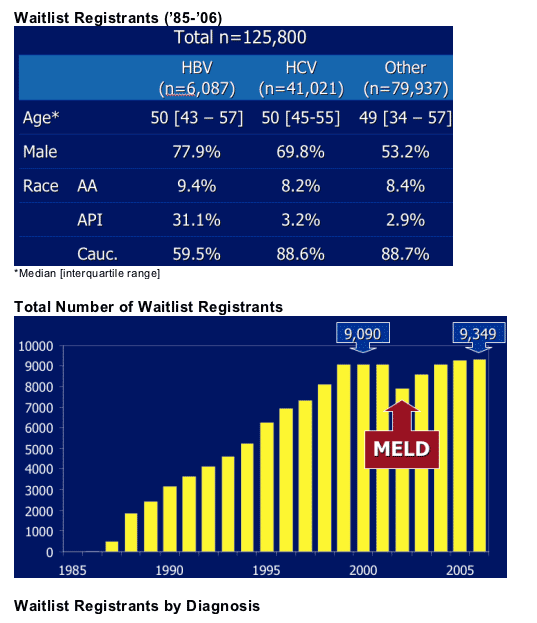
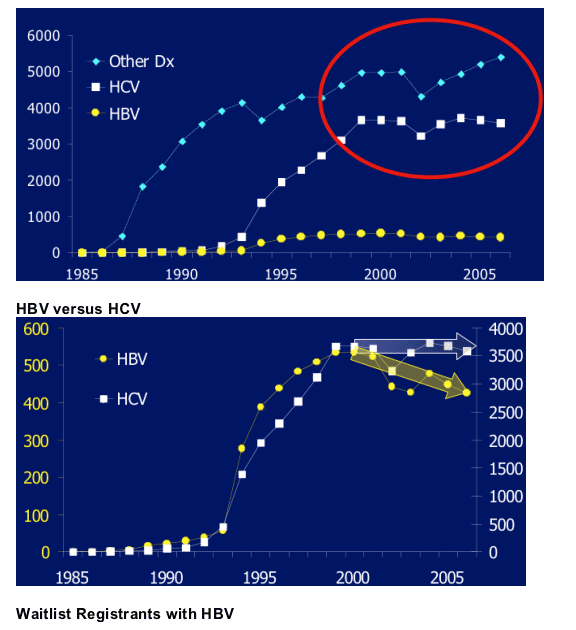
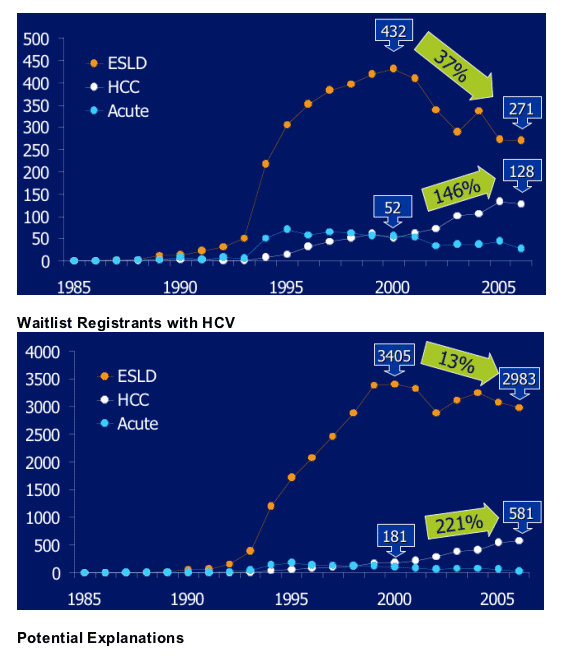
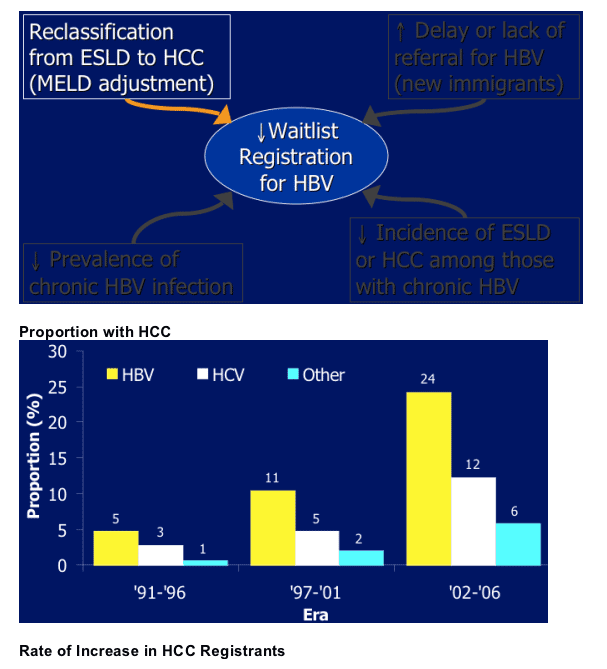
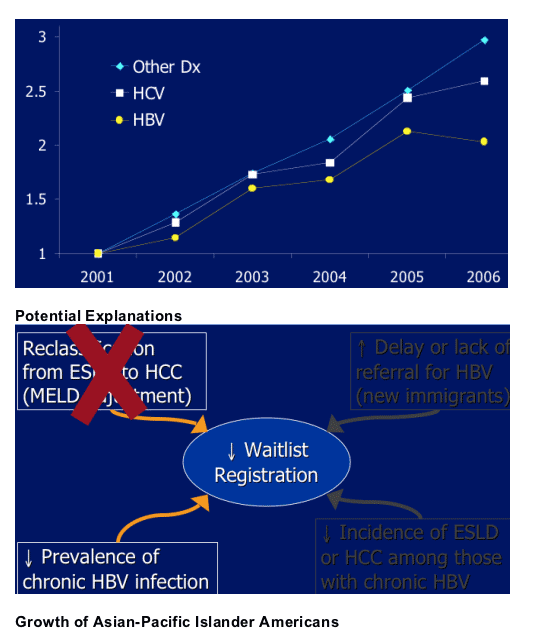
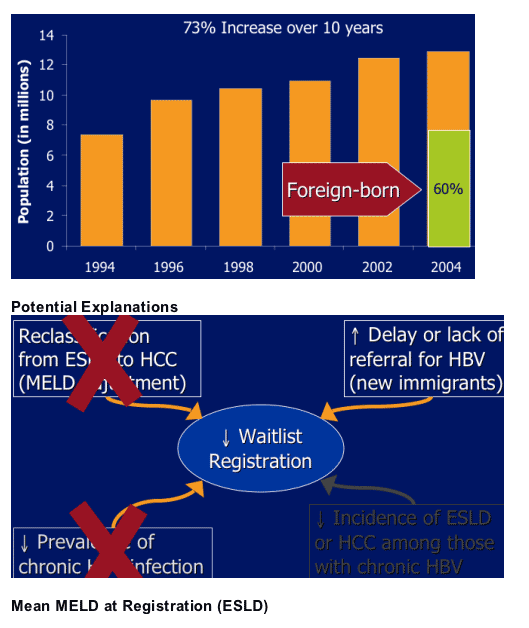
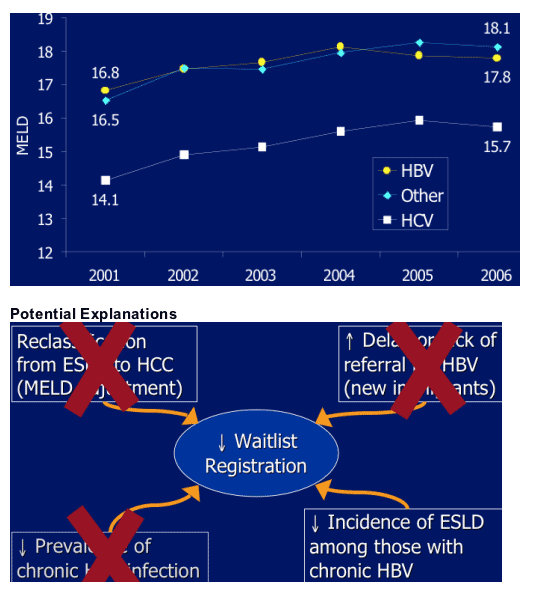
|
| |
|
 |
 |
|
|